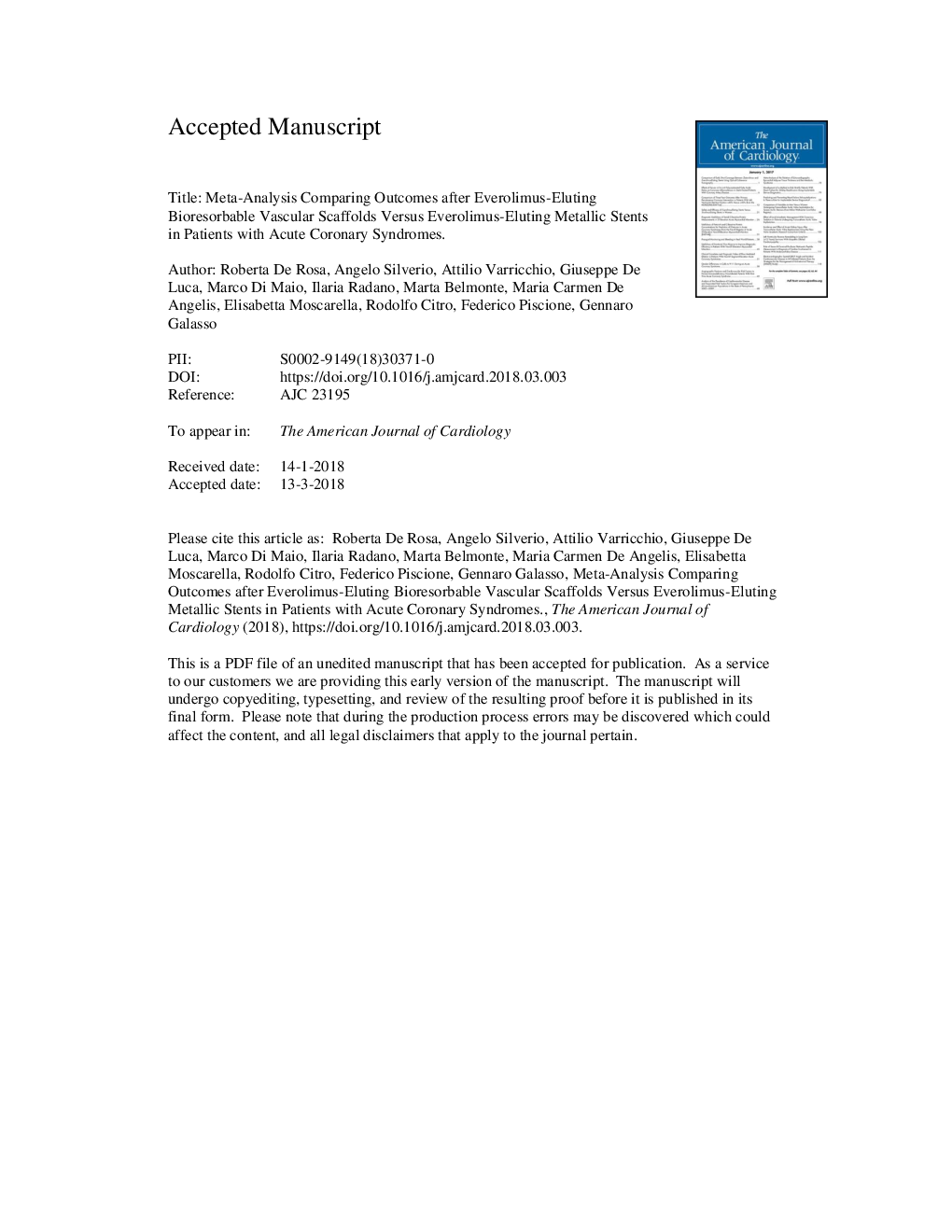| کد مقاله | کد نشریه | سال انتشار | مقاله انگلیسی | نسخه تمام متن |
|---|---|---|---|---|
| 8651188 | 1572057 | 2018 | 21 صفحه PDF | دانلود رایگان |
عنوان انگلیسی مقاله ISI
Meta-Analysis Comparing Outcomes After Everolimus-Eluting Bioresorbable Vascular Scaffolds Versus Everolimus-Eluting Metallic Stents in Patients with Acute Coronary Syndromes
ترجمه فارسی عنوان
مقایسه نتایج متاآنالیز بعد از داربست های عروقی بیرورسپور کننده اوردولیموس در مقابل استنت های فلزی اوردولیموس در بیماران مبتلا به سندرم های حاد کرونر
دانلود مقاله + سفارش ترجمه
دانلود مقاله ISI انگلیسی
رایگان برای ایرانیان
موضوعات مرتبط
علوم پزشکی و سلامت
پزشکی و دندانپزشکی
کاردیولوژی و پزشکی قلب و عروق
چکیده انگلیسی
Acute coronary syndromes (ACS) may represent an intriguing clinical scenario for implantation of bioresorbable vascular scaffold (BRS). Nevertheless, the knowledge about the performance of these devices in patients with ACS is limited. Therefore, we performed a meta-analysis of clinical studies aiming to assess the safety and efficacy of everolimus-eluting-BRS versus everolimus-eluting-metallic stents (EES) in ACS patients undergoing percutaneous coronary intervention. Six studies enrolling 2,318 patients were included and analyzed for the risk of primary safety outcome (stent or scaffold thrombosis [ST/ScT]), primary efficacy outcome (target lesion revascularisation [TLR]), and secondary outcomes (myocardial infarction, cardiac death, all-cause death). Median follow-up was 9.5 (6 to 19.5) months. Patients treated with BRS had a significantly higher risk of definite ST/ScT compared with those receiving EES (2.3% vs 1.08%, odds ratio [OR] 2.22, 95% confidence interval [CI] 1.10 to 4.45, pâ=â0.03, I2â=â0%). Similarly, the risk of TLR was significantly higher in the BRS compared with EES group (3.5% vs 2.5%, OR 1.79, 95% CI 1.02 to 3.16, pâ=â0.04, I2â=â0%). When TLRs due to thrombosis were excluded, the difference in risk estimates between the 2 groups was no longer significant (OR 1.19, 95% CI 0.48 to 2.98, pâ=â0.71, I2â=â25%). Risk for secondary endpoints did not differ between the 2 groups. Results were confirmed when clinical and procedural variables were tested as potential effect modifiers in the meta-regression analysis for both primary endpoints. In conclusion, compared with those receiving EES, patients with ACS treated with BRS had increased risk of definite device thrombosis and TLR at mid-term follow-up.
ناشر
Database: Elsevier - ScienceDirect (ساینس دایرکت)
Journal: The American Journal of Cardiology - Volume 122, Issue 1, 1 July 2018, Pages 61-68
Journal: The American Journal of Cardiology - Volume 122, Issue 1, 1 July 2018, Pages 61-68
نویسندگان
Roberta MD, PhD, Angelo MD, Attilio MD, PhD, Giuseppe MD, PhD, Marco MD, Ilaria MD, Marta MD, Maria Carmen MD, PhD, Elisabetta MD, Rodolfo MD, Federico MD, PhD, Gennaro MD, PhD,
